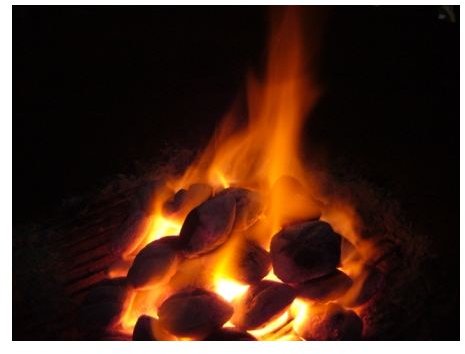What Causes Spontaneous Combustion?
Spontaneous Combustion
Spontaneous combustion is the process of a material catching fire by itself without the aid of any external agencies. It is called spontaneous because it occurs on its own and is self-generated. Though there are historical references to spontaneous human combustion that is a topic of discussion among scientists, the spontaneous combustion of a pile of compost, oily rags in a dust bin, and coal carried in the hatches of a cargo ships are very common.The commonly found materials and compounds that can spontaneously ignite are as follows:
- Coal in bulk
- Oily Rags
- Garbage
- Compost
- Wheat Dust and grains in bulk
- other organic compounds that can ferment and release heat
One thing to note is that the materials that spontaneously ignite have a characteristic of having a very low auto ignition temperature which is attainable due to the nature of the surroundings and fermentation or oxidation with the release of heat.
Coal Fire
Causes of Spontaneous Combustion
Spontaneous combustion is caused by the heating of the material to its auto ignition temperature. This happens in certain conditions when the surface area exposed to the air is low so that the dissipation of the heat cannot take place. As the heat cannot be dissipated to the outside atmosphere, it keeps on increasing the temperature of the material until it bursts into flames. Also the more the insulating nature of the material, the more the chances of spontaneous ignition.
The cause of the heating up has been identified as the oxidation of the material. If you take the example of oily rags as used in the engine room of merchant ships also in workshops and industries worldwide, they should be properly disposed off after use. Throwing the rags in a corner or in a heap is to invite trouble. When the rags are kept in a heap the rags in the center of the heap are being heated up but cannot release their heat to the environment, and they eventually catch fire. The same is the case with heap of manure and compost also with coal stored in bulk. One important point to note is that the more the material heats, the faster is the rate of temperature rise. Also smoldering and heated material suddenly exposed to air can also start a fire or trigger an explosion.
How to Avoid Spontaneous Combustion
The most common and practical advise to avoid spontaneous combustion is to have good house keeping. The garbage should be properly segregated and the bin for oily rags should be covered so that it does not get oxygen for oxidation. If the oily rags have to be reused they should be spread out to dry so that heat can be dissipated to the atmosphere.
Coal in bulk should be carefully stored to avoid spontaneous combustion. On ships regular testing of the temperatures of the hold should be done. Carbon-dioxide stored in bulk should be used when fire is imminent and the hatches should be cooled from the outside with water sprays and not opened up until firefighting tugs or port is reached.
Bales of hay stored in store houses have to be regularly monitored for temperature and any temperature above 150 degrees F can be dangerous and should be inspected daily. To avoid hay fires small bales should not contain more that 20 to 22 % moisture and stacking to allow ventilation would be a good idea.
Thus spontaneous combustion is not a miracle, but simple science and it must be guarded against. When storage of materials that can spontaneously ignite is to be done then it must be carefully monitored, carefully stored, ventilation and dissipation of the heat must be provided for and sufficient fire extinguishing media should be available.
Image Credit
Coal Fire:https://commons.wikimedia.org/wiki/File:Coal_and_Fire.JPG
